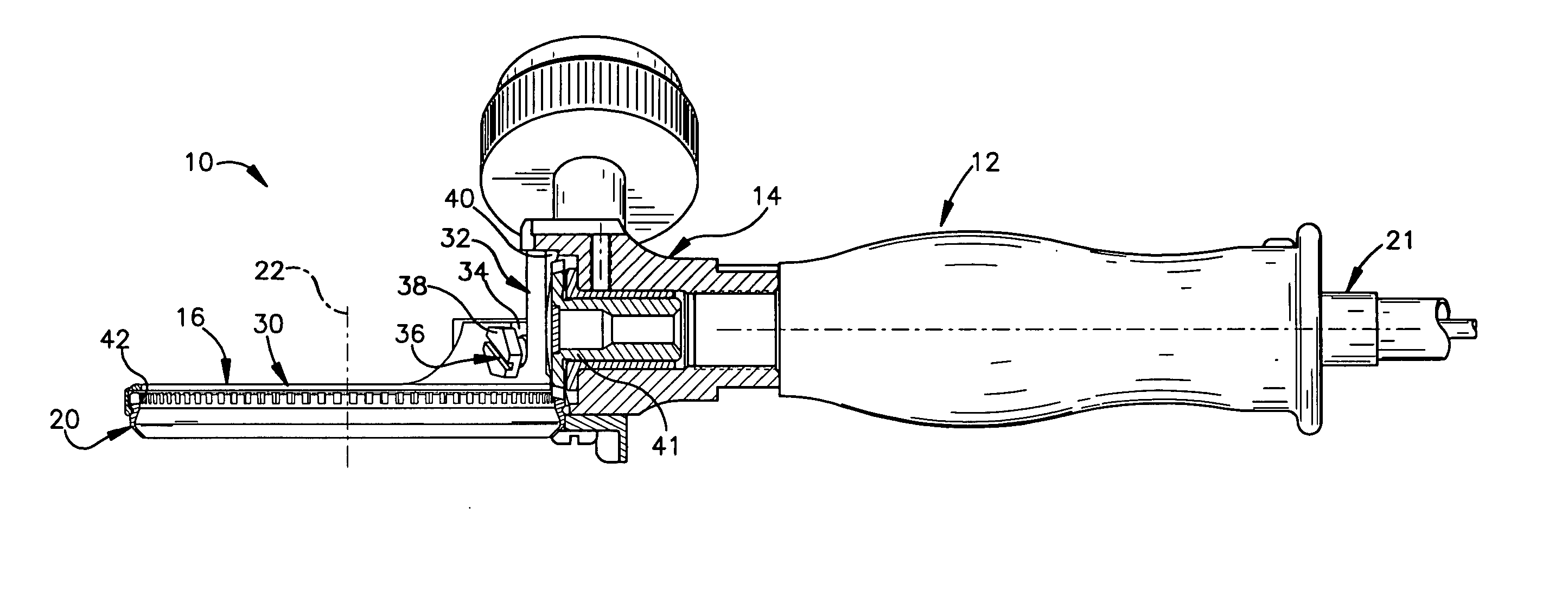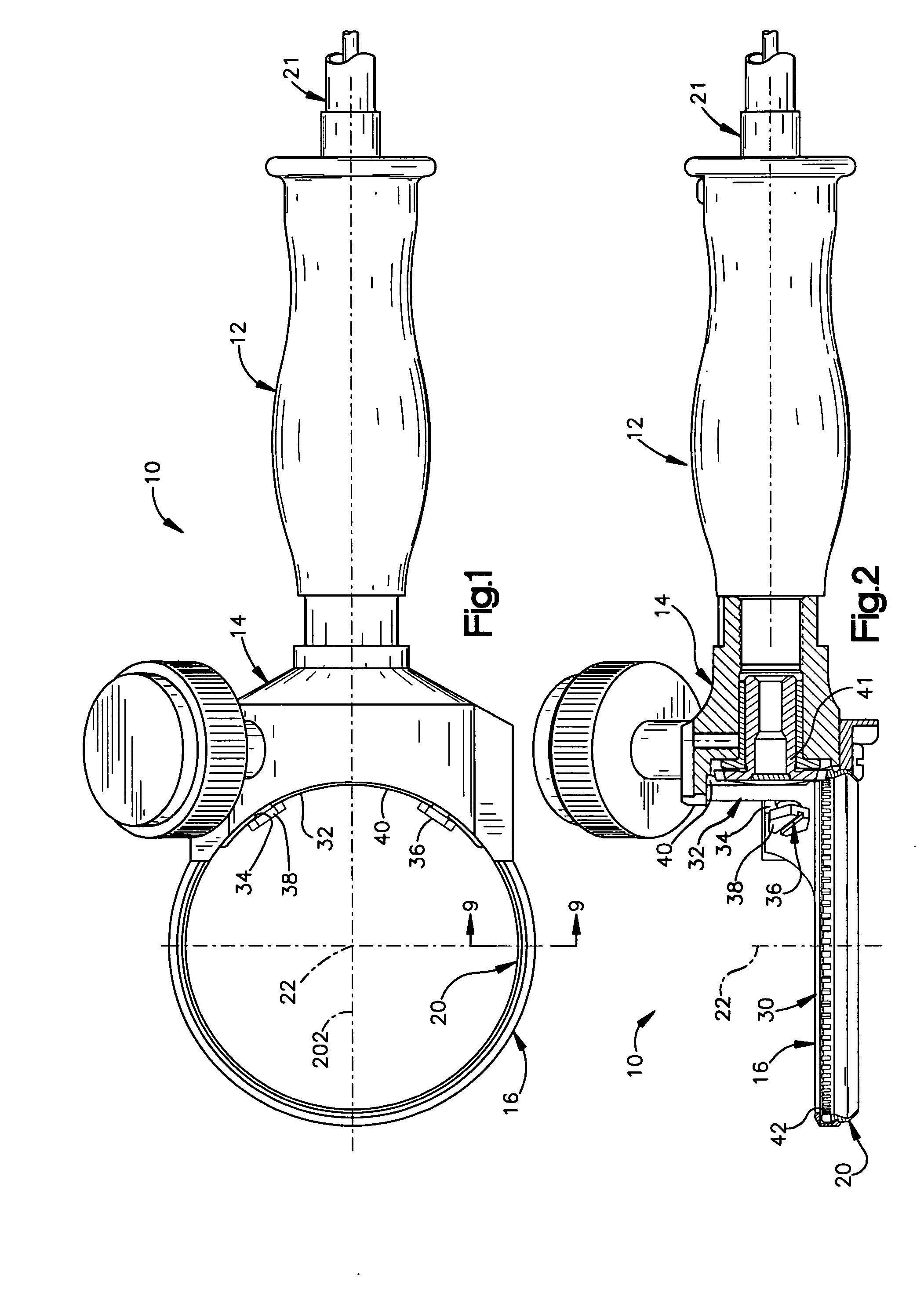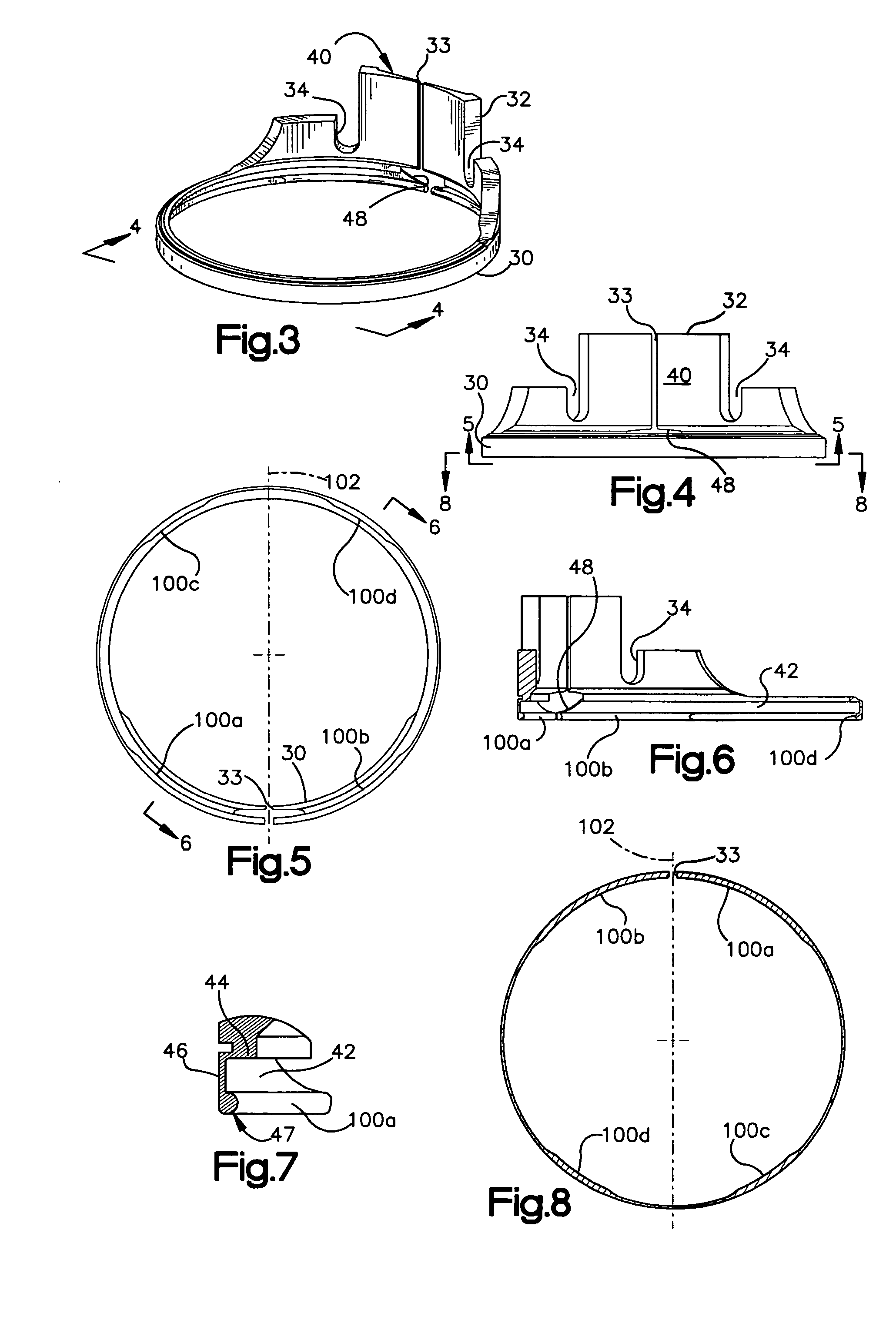Low friction rotary knife
a rotary knife and low friction technology, applied in the field of power operated rotary knives, can solve the problems of blade shifting axially into undesired contact with the blade housing, other problems, and inability to operate, so as to reduce the friction between blade and housing
- Summary
- Abstract
- Description
- Claims
- Application Information
AI Technical Summary
Benefits of technology
Problems solved by technology
Method used
Image
Examples
Embodiment Construction
[0030] A power operated knife 10 constructed according to a preferred embodiment of the invention is illustrated by FIGS. 1 and 2 of the drawings as comprising a handle 12, a headpiece 14, a blade support structure 16 and an annular blade 20.
[0031] The knife 10 is connected to a remote electric motor via a flex shaft 21 that extends into the handle 12 and transmits drive from the motor to the blade 20. The motor and flex shaft may be of any conventional or suitable construction and are not illustrated or described in detail. The flex shaft is sufficiently supple that the user of the knife, grasping the handle, moves the knife with ease and accuracy while slicing or trimming meat, or removing meat from bones, etc. The handle 12 and headpiece 14 may be of any conventional or suitable construction and are therefore not described in detail. Although an electric motor driven knife is disclosed, the knife could as well contain a pneumatic motor in the handle 12 and be connected to a comp...
PUM
 Login to View More
Login to View More Abstract
Description
Claims
Application Information
 Login to View More
Login to View More - R&D
- Intellectual Property
- Life Sciences
- Materials
- Tech Scout
- Unparalleled Data Quality
- Higher Quality Content
- 60% Fewer Hallucinations
Browse by: Latest US Patents, China's latest patents, Technical Efficacy Thesaurus, Application Domain, Technology Topic, Popular Technical Reports.
© 2025 PatSnap. All rights reserved.Legal|Privacy policy|Modern Slavery Act Transparency Statement|Sitemap|About US| Contact US: help@patsnap.com



